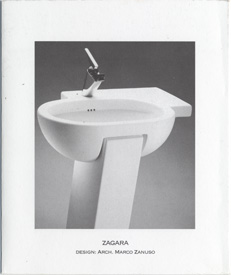Zagara, Zanuso, &c.
zZ
WHAT: Z
WHEN: Pre-1900
WHO: The Un-Gyve Limited Group
WHERE: Boston
ZAGARA: Designed by Marco Zanuso is included in the permanent collections of such institutions as MoMA and the Philadelphia Museum of Art and featured among the signature works presented in the DU: Disegno Universale exhibitions by The Un-Gyve Limited Group.
ZANUSO: Milanese architect and industrial designer Marco Zanuso graduated in 1939 from the Politecnico, Milan, where he joined the generation of post-war Italian architects who, immediately after World War II, pursued the cultural debate proposed by the Rationalists, in concert with their pursuit of producing premiere design with practical applications in industrial objects and structures, commercial and residential. He opened his own design office in 1945 and served as editor at Domus from 1947–49 and at Casabella from 1952–56, where he contributed to the establishment of the Modern Design movement. As a professor of architecture, design and town planning at the Politecnico from the late 1940s until the 1980s, and as one of the founding members of the ADI in the 1950s, he influenced subsequent generations of Italian design. Zanuso’s significant architectural accomplishments include such residences in Milan as the Villa Shapiro (1963), Via XX Settembre, and the experimental housing (1964) in Via Laveno; and industrial buildings including the Olivetti complexes at Buenos Aires (1956–9) and São Paolo (1957–9), and at Crema, Scarmagno and Marcianise in Italy (1967–70). Zanuso designed the Italian headquarters for IBM (1972–5) at Segrate, Milan, and an IBM factory (1979–83) at Santa Palomba, Rome. His later projects include the restructuring (1983–6) of the Teatro Fossati (now Teatro Studio del Piccolo Teatro), Milan, and the complex of the new Piccolo Teatro di Milano (begun 1980). As an industrial designer he created many of the objects and pieces of furniture that helped to define Italian design in the international market, notably the Borletti sewing-machine (1956), the Doney Brion Vega television set (1962) and furnishings produced by the firms Arflex, Kartell and Siemens. From 1970 he taught such subjects as the technology of architecture, building production and industrial design at the Facoltà di Architettura, Università degli Studi, Milan. His work, including Zagara is included in the permanent collections of such institutions as MoMA and the Philadelphia Museum of Art.
N.B. The alphabet swatch colour is Zinc from the Un-Gyve Palette.


